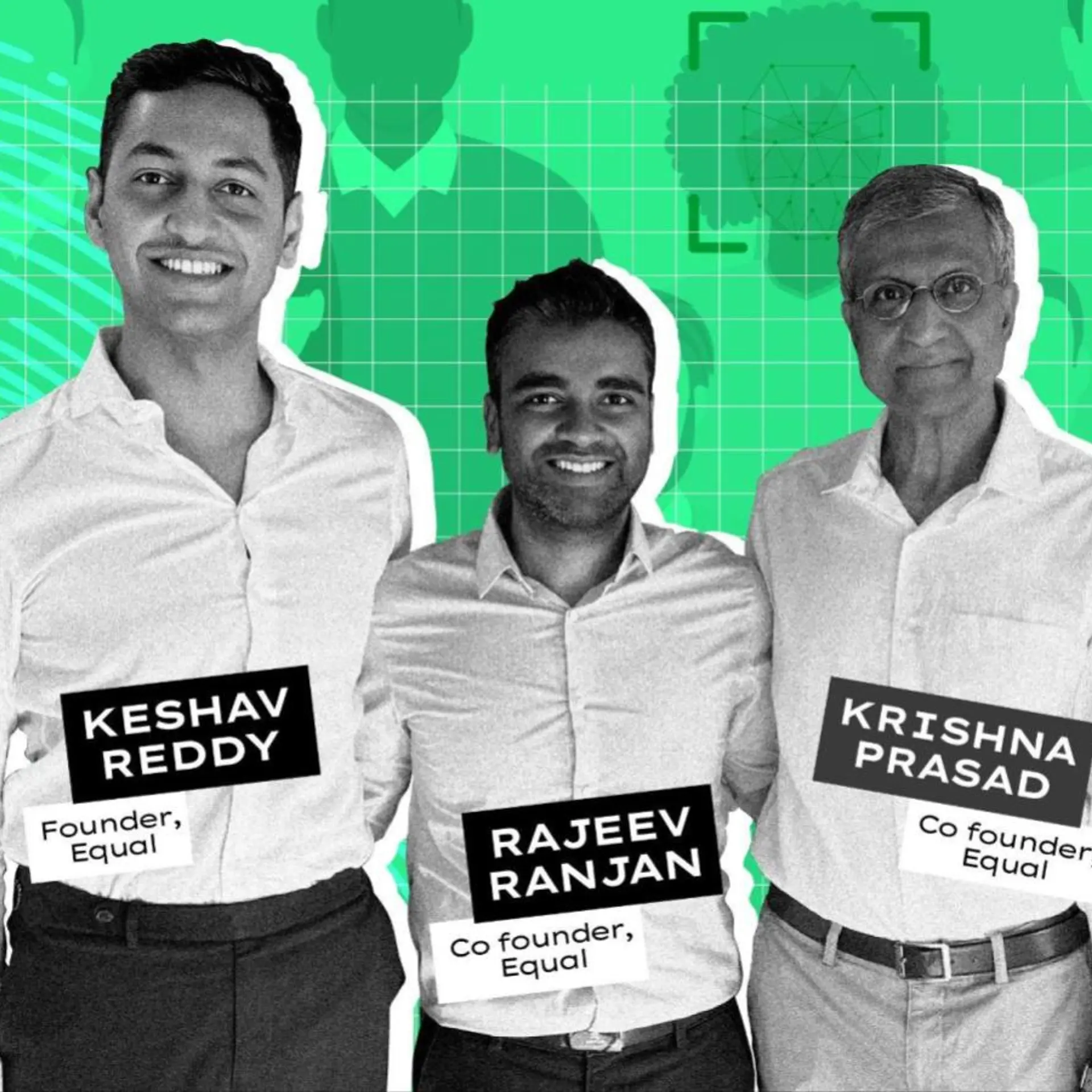Inside Polkadot’s entry into India and why it’s exciting for Web3
Polkadot is the brainchild of Ethereum co-founder Gavin Wood, who designed the blockchain network to function as a sharded, Ethereum-like chain. It marked its official entry into India last week.
Despite crypto startups facing challenging regulations in India, interest in the country’s Web3 sector doesn’t seem to be waning.
While Ethereum, , and Solana remain the dominant blockchain ecosystems in India, other large global Layer-1 chain networks are increasingly looking to expand into the country.
Last year, companies like NEAR Protocol and Algorand made strides in setting up their India teams and working with the local Web3 startup ecosystem.
Now, the latest entrant is Polkadot—a leading global blockchain ecosystem comprising a growing set of specialised, interoperable chains known as ‘parachains’ (short for parallelised chains). It held a global conference—Polkadot Now India—in Bengaluru last week.
“We work with ecosystem teams building parachains and infrastructure on Polkadot. For anyone who wants to build on Polkadot in India, we provide guidance and support,” Gautam Dhameja, Delivery Director, Parity, told The Decrypting Story.
Parity drives research and development in the Polkadot ecosystem. The team is responsible for launching the Polkadot network and Web3 Foundation, its non-profit arm.
“Scalability and ease of use have remained problems for the industry. We are looking to solve this through parachains. Going back to these first principles can help platforms scale to a billion users, and for this mission, India is a crucial geography,” Dhameja added.
Polkadot is the brainchild of Gavin Wood—an Ethereum co-founder who coined the term ‘Web3’. Wood designed the Polkadot network to function as a sharded, Ethereum-like chain.
A sharded chain is a blockchain network that is divided into several smaller networks known as shards, giving it increased efficiency and throughput.
Polkadot’s primary chain—the Relay Chain—is the base layer into which parachains are plugged. It provides security, consensus, finality and voting to the Polkadot ecosystem, while the parachains separately support functionality for the apps built on them.
Each parachain uses Parity’s substrate modular framework for selecting specific features that best suit its application’s requirements.
In fact, from November 2021—when the parachain slot auctions first took place—till January 2023, over 37 parachains have been onboarded, with another 42 on Polkadot’s canary network Kusama.
Polkadot wants to continue with the momentum of building scalable blockchain apps to make a big splash in India’s Web3 sector.

YourStory launches second edition of Top 25 Web3 Innovations report
Working alongside regulators
Several projects building on Polkadot are looking to align themselves with the network’s larger mission to onboard more users into the ecosystem. They include KILT Protocol, Astar Network, Moonsama, Public Pressure, Polkassembly, Unique Network, and Polkadex, among others, which are part of Polkadot’s initial outreach into India.
Each of these players is focused on a unique problem statement within the Polkadot ecosystem to solve.
For instance, Polimec Foundation enables fundraising for Polkadot projects or anyone who wants to build a project in its ecosystem.
“We’ve been figuring out how blockchain projects raising funds on-chain can be compliant with the relevant regulations. In this regard, Polkadot projects like ours want to become increasingly active in India,” said Kasper Mai Jorgensen, Co-founder of Polimec Foundation, and ex-CFO at Web3 Foundation.
Polimec is a decentralised, community-driven funding protocol developed on Polkadot.
“While regulators are keen to understand Web3, they may not be as blockchain-native as startups. So, we want to push regulators to understand the benefits of decentralised technology and show that even governments can use it to solve existing trust issues,” Jorgensen added.
In fact, local state governments like Telangana have already taken the first steps to understand and develop blockchain products in a regulatory sandbox environment, where selected blockchain startups can test their solutions in a controlled environment.
The companies also receive support in the form of mentorship, regulatory compliance, and collaboration with key ecosystem stakeholders.
So far, global Layer-1 network Algorand has been collaborating with Telangana to support Web3 startups, but it could be only a matter of time till more international projects like Polkadot begin engaging with Indian regulators.
“We want to help all Web3 stakeholders understand the key things regulators want to achieve, and build ways for on-chain KYC and AML solutions to prevent money laundering and tax evasion,” Jorgensen said.
Infrastructure, platform plays on Polkadot
Besides helping with funding and regulatory compliance, Polkadot parachain projects are seeking to support Indian developers with infrastructure and interoperability in the ecosystem.
Astar Network, for instance, provides infrastructure for building decentralised apps (DApps) and access to the Polkadot ecosystem through its parachain slot. It also features bridges to other major ecosystems such as Ethereum, BNB Chain, Polygon, Cosmos, and more.
”Other Layer-1 blockchains are typically smart contract platforms anyone can use, but to build a business use case around it, it is usually left up to the founders. However, in Polkadot, the native interoperability allows projects to leverage features of other parachains and makes it easier to build a company around,” said Hoon Kim, CTO, Astar Network.
With projects built on Polkadot now aiming to expand their talent pools and user base into India, some Polkadot stakeholders believe there will be an emergence of promising projects building the rails to drive mainstream adoption in Web3.
Mark Cachia, Founder, Scytale Ventures has been investing in several such global Polkadot projects such as Astar, enterprise Layer-2 Aventus, identity management project KILT, and more.
Scytale is a digital asset management firm that looks at investing in early-stage blockchain and crypto projects.
“Our investment thesis is based on what is missing to drive mainstream adoption. With Polkadot’s foray into India, we expect to see many new projects solving for better UI/UX, wallet infrastructure, loyalty programmes, and more,” Cachia added.
Growing the Polkadot ecosystem
For Polkadot and its ecosystem stakeholders, India remains a critical geography as it looks to get more users onboarded into the ecosystem through Q4 2022.
While the wider crypto industry slowdown in 2022 impacted most firms in terms of user exits, Polkadot’s Relay Chain network has seen a recovery in terms of new and daily active accounts added.
According to Messari research based on Polkaholic and Subscan data, the number of daily active accounts on the Relay Chain (parachain activity not included) rose by 63% from around 5,000 in Q3 2022 to over 8,000 in Q4 2022.
New accounts increased by 49.4% from around 144,000 to around 216,000 over the same period.

Source: Messari, Polkaholic, Subscan
However, there was a 63% year-on-year (YoY) decline for daily active accounts while YoY decline for new accounts stood at 70.5%.
The year-long negative trend, primarily caused by black swan events in the crypto industry such as the collapse of TerraUSD-Luna and FTX, is something Polkadot will look to arrest as it enters India and looks to onboard masses of new users.
The short-term trend of recovery could be indicative of a favourable future for Polkadot, especially with quarterly revenues remaining flat despite declines in overall market capitalisation.
Polkadot’s Cross-Consensus Message Format (XCM), launched in May 2022, is another exciting development. It enables the communication between parachains and even beyond the Polkadot ecosystem. By December 2022, it already transmitted over 166,000 transfers across 70 channels, according to Messari research.
In Q4 2022, several parachain projects such as Acala, Bitgreen, Darwinia, and Equilibrium among others, announced new developments and features, signalling a continued interest in Polkadot.
Edited by Kanishk Singh







